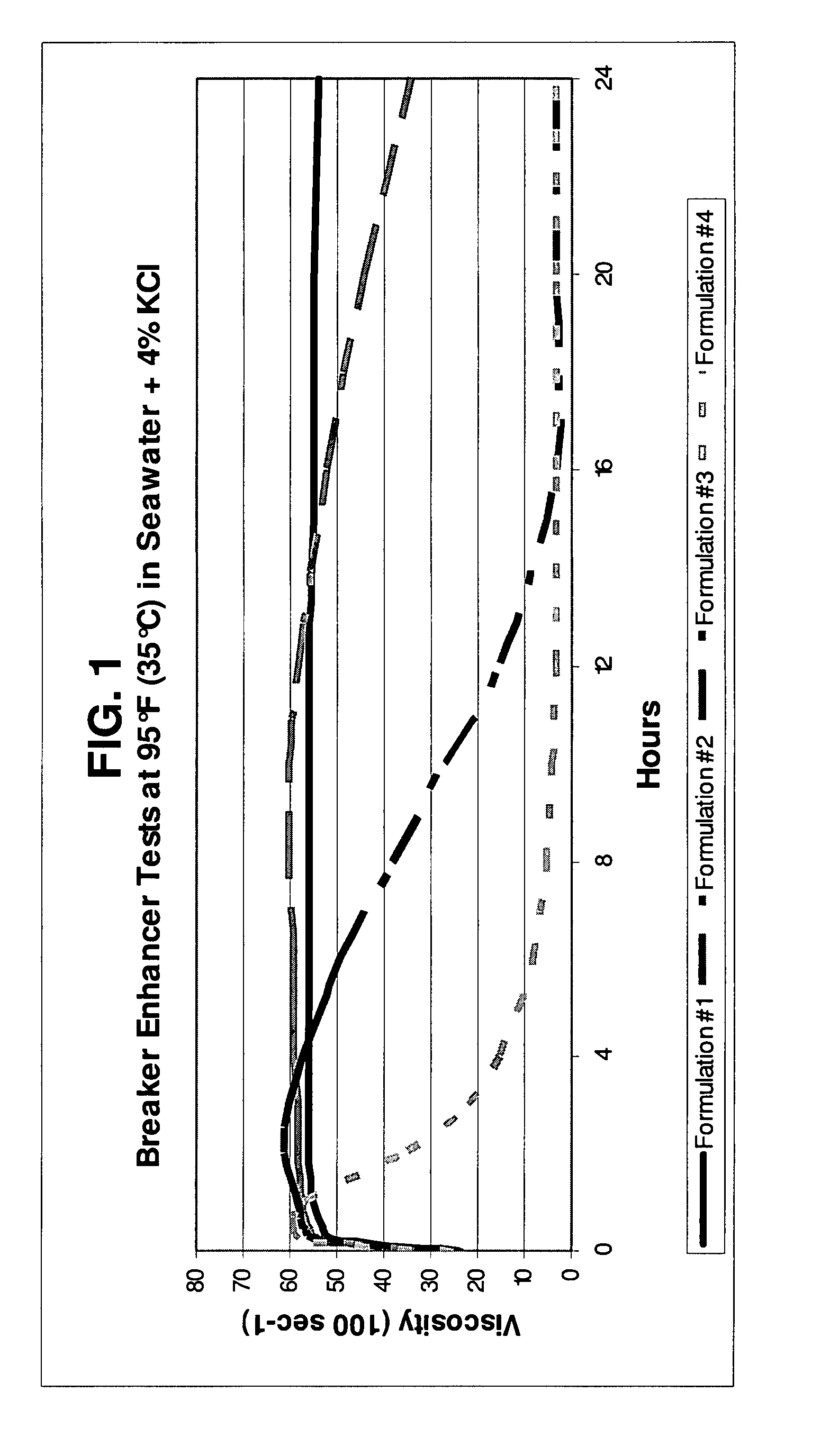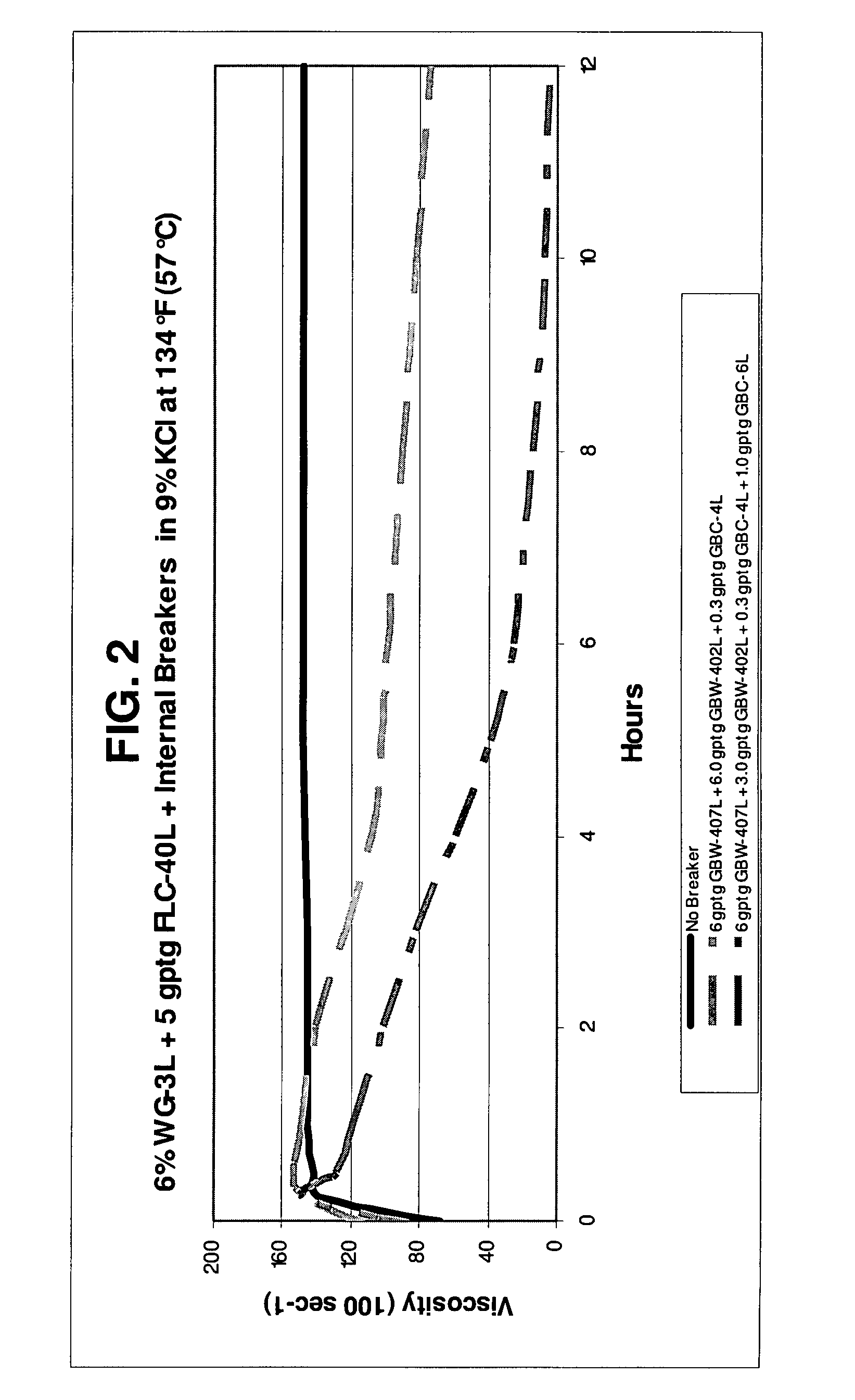Use of oil-soluble surfactants as breaker enhancers for VES-gelled fluids
a technology of oil-soluble surfactants and gelled fluids, which is applied in the field of oil-soluble surfactants as breaker enhancers for ves-gelled fluids, can solve the problems of fluid deformation, complex development of suitable fracturing fluids, and inability to close or heal cracks or fractures completely, etc., to accelerate the reduction of the viscosity of the gelled aqueous fluid, increase the viscosity thereof, and reduce the viscosity of the gel
- Summary
- Abstract
- Description
- Claims
- Application Information
AI Technical Summary
Benefits of technology
Problems solved by technology
Method used
Image
Examples
Embodiment Construction
[0019]It has been discovered that oil-soluble surfactants (OSSs) may be used as breaker enhancers for known internal breakers for VES-gelled aqueous fluids, such as the DiamondFRAQ™ technology available from Baker Oil Tools. The oil-soluble surfactants may allow lower internal breaker concentrations to be used to achieve quick and complete VES-gelled fluid breaks (viscosity reductions). This family of oil-soluble surfactants has been discovered to activate polyenoic acids and mineral oil internal breakers so that they may now be used in high salinity brines down to ambient temperatures. This expands and enhances these internal breaking technologies. The oil-soluble surfactants are relatively inexpensive, may be used in relatively low concentrations, and may lower the cost of using the internal breakers.
[0020]More specifically, the oil-soluble surfactant breaker enhancers may allow the internal breakers to work at lower temperature in high salinity brine mix waters, in non-limiting e...
PUM
| Property | Measurement | Unit |
|---|---|---|
| temperature | aaaaa | aaaaa |
| temperatures | aaaaa | aaaaa |
| wt % | aaaaa | aaaaa |
Abstract
Description
Claims
Application Information
 Login to View More
Login to View More - R&D
- Intellectual Property
- Life Sciences
- Materials
- Tech Scout
- Unparalleled Data Quality
- Higher Quality Content
- 60% Fewer Hallucinations
Browse by: Latest US Patents, China's latest patents, Technical Efficacy Thesaurus, Application Domain, Technology Topic, Popular Technical Reports.
© 2025 PatSnap. All rights reserved.Legal|Privacy policy|Modern Slavery Act Transparency Statement|Sitemap|About US| Contact US: help@patsnap.com



